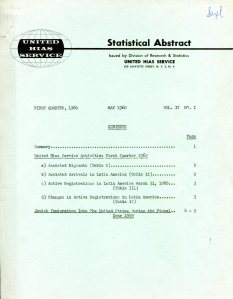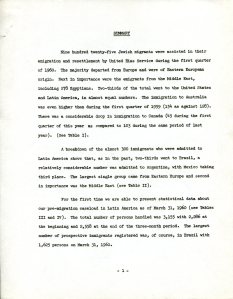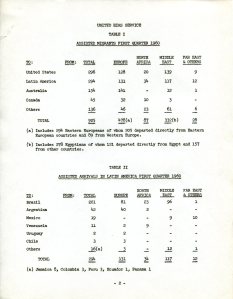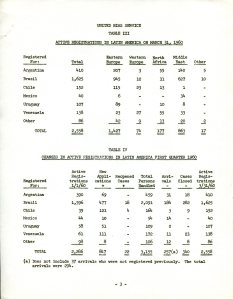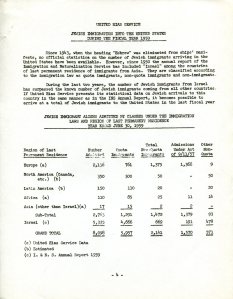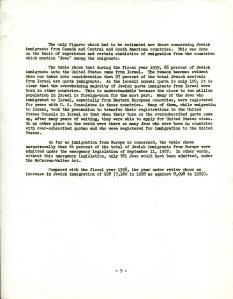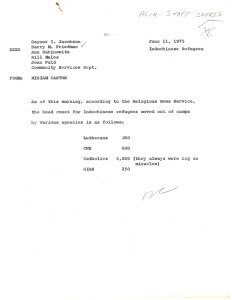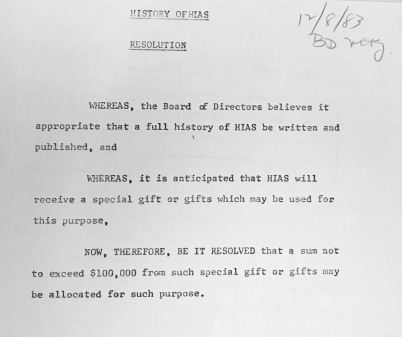
It all started with a HIAS Board meeting resolution in 1983 that deemed a written history of HIAS and its involvement in the history of Jewish migration ‘appropriate’ and by all means necessary.
By 1984, the Executive Committee approved several thousand dollars in funds from the Liskin Family Foundation and the Samuel Bronfman Foundation in order to fund the project.
“Such a volume would,” according to HIAS President Emeritus Edwin Shapiro in a letter to the Board, “by virtue of HIAS’ historic and integral role in aiding Jewish migrants, highlight the work of our organization.” Mr. Shapiro goes on to applaud the Liskin family’s generosity by noting “and the fact that HIAS was the organization closest to Ida Liskin’s heart, stems to a great extent, from the fact that Mrs. Liskin never forgot that it was a HIAS representative who met her at the docks when she arrived in the U.S. as a bewildered, 18-year-old girl.”
Ida Liskin, that very same bewildered girl, later went on to become a notable member of the HIAS Women’s Division and remained a close and long-term friend of HIAS. She made sure to bequeath money to HIAS in her will.
Soon after funding was legally secured, HIAS organized a Book Committee to coordinate the publication details and chose Ronald Sanders, noted Jewish history author and historian as the author of the forthcoming tome.
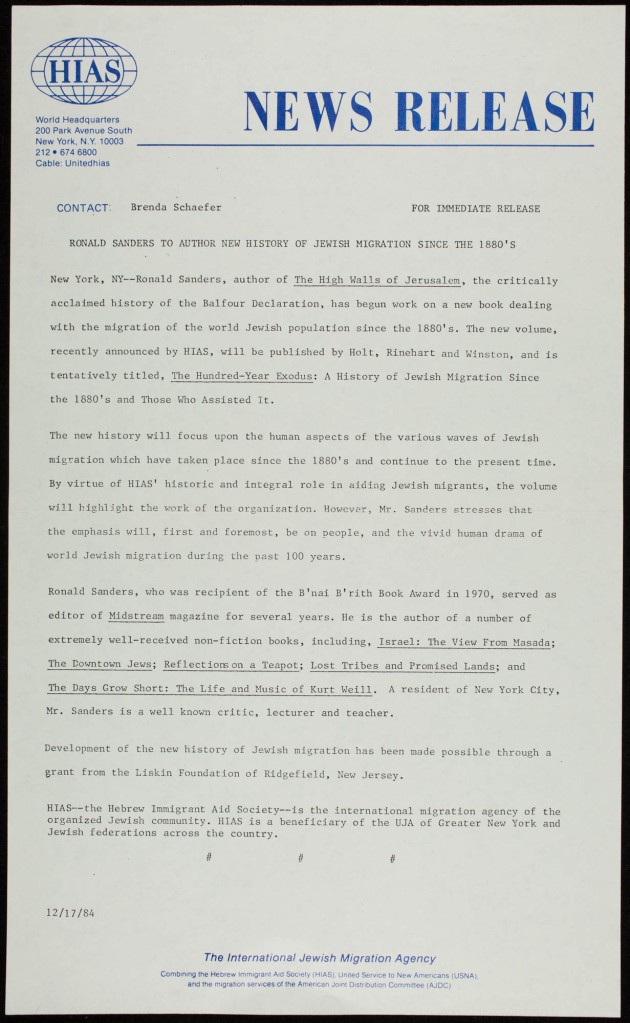
The Book Committee unanimously agreed that “The purpose of the book would be to educate, promote HIAS’ identity, attract membership, attract potential leadership, attract bequests. The book should primarily be addressed to the Jewish community, students, (high-school, undergraduate, post-graduate), as well as to the general public, scholars, and practitioners.”
What a wish list!
Visas to Freedom by Mark Wischnitzer, another written history of HIAS, only spanned the organization’s history from its beginning up until 1954. The Book Committee’s official opinion was that although it was a useful reference book, it was “dry and rather uninteresting.” (We are still looking for documentation to see HOW happy HIAS was with Sanders’ final publication…)
Wischnitzer’s book and Sanders’ book Shores of refuge: A hundred years of Jewish emigration, are both available to request and read in the Center for Jewish History’s Lillian Goldman Reading Room.
Let us know which one you enjoy more!
